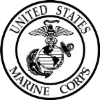Available 24/7
Professional Instruction
Free Training Materials






Course Details
The Installation, Storage and Compute with Windows Server 2016 - 20740 course is a 5-day course that is intended for professionals who will be responsible for managing storage and compute by using Windows Server 2016, and who need to understand the scenarios, requirements, and storage and compute options that are available and applicable to Windows Server 2016.
Topics covered in the course include:
- Preparing and installing Nano Server, a Server Core installation, and plan a server upgrade and migration strategy.
- Describing the various storage options, including partition table formats, basic and dynamic disks, file systems, virtual hard disks, and drive hardware, and explain how to manage disks and volumes.
- Describing enterprise storage solutions, and select the appropriate solution for a given situation.
- Implementing and managing Storage Spaces and Data Deduplication.
- Installing and configuring Microsoft Hyper-V, and configuring virtual machines.
- Deploying, configuring, and managing Windows and Hyper-V containers.
- Describing the high availability and disaster recovery technologies in Windows Server 2016.
- Planning, creating, and managing a failover cluster.
- Implementing failover clustering for Hyper-V virtual machines.
- Configuring a Network Load Balancing (NLB) cluster, and plan for an NLB implementation.
- Creating and managing deployment images.
- Managing, monitoring, and maintaining virtual machine installations.
Target Student:This course is designed for IT professionals who have some experience working with Windows Server, and who are looking for a single five-day course that covers storage and compute technologies in Windows Server 2016.
Students should possess the following Experience working before attending the course:
- Basic understanding of networking fundamentals.
- Understanding of security best practices.
- Understanding of basic AD DS concepts.
- Basic understanding of server hardware.
- Experience supporting and configuring Windows client operating systems such as Windows 8 or Windows 10.
- Some previous Windows Server operating system experience, such as experience as a Windows Server systems administrator.
Section 1: Installing, upgrading, and migrating servers and workloads
This section discusses the new features of Windows Server 2016, and explains how to prepare for and install Nano Server and Server Core. This section also discusses how to plan a server upgrade and migration strategy, and explains how to perform a migration of server roles and workloads within and across domains. Finally, This section discusses how to choose an activation model based on your environment characteristics.
Topics :
Introducing Windows Server 2016
Preparing and installing Server Core
Preparing for upgrades and migrations
Migrating server roles and workloads
Windows Server activation models
Lab :
Installing and configuring Server Core
Installing Server Core
Completing post-installation tasks on Windows Server 2016 Core
Performing remote management
Section 2: Configuring local storage
This section discusses how to manage disks and volumes in Windows Server 2016.
Topics :
Managing disks in Windows Server
Managing volumes in Windows Server
Lab :
Configuring local storage
Creating and managing volumes
Resizing volumes
Managing virtual hard disks
Section 3: Implementing enterprise storage solutions
This section covers direct-attached storage (DAS), network-attached storage (NAS), and storage area networks (SANs). It also explains the purpose of Microsoft Internet Storage Name Service (iSNS) Server, data center bridging (DCB), and Multipath I/O (MPIO). Additionally, this section compares Fibre Channel, Internet Small Computer System Interface (iSCSI), and Fibre Channel over Ethernet (FCoE), and describes how to configure sharing in Windows Server 2016.
Topics :
Overview of DAS, NAS, and SANs
Comparing Fibre Channel, iSCSI, and Fibre Channel over Ethernet
Understanding iSNS, DCB, and MPIO
Configuring sharing in Windows Server 2016
Lab :
Planning and configuring storage technologies and components
Planning storage requirements
Configuring iSCSI storage
Configuring and managing the share infrastructure
Section 4: Implementing Storage Spaces and Data Deduplication
This section discusses how to implement and manage Storage Spaces. This section also covers how to implement Data Deduplication.
Topics :
Implementing Storage Spaces
Managing Storage Spaces
Implementing Data Deduplication
Lab :
Implementing Storage Spaces
Creating a Storage Space
Lab :
Implementing Data Deduplication
Installing Data Deduplication
Configuring Data Deduplication
Section 5: Installing and configuring Hyper-V and virtual machines
This section gives an overview of Hyper-V and virtualization. It explains how to install Hyper-V, and how to configure storage and networking on Hyper-V host servers. Additionally, it explains how to configure and manage Hyper-V virtual machines.
Topics :
Overview of Hyper-V
Installing Hyper-V
Configuring storage on Hyper-V host servers
Configuring networking on Hyper-V host servers
Configuring Hyper-V virtual machines
Managing virtual machines
Lab :
Installing and configuring Hyper-V
Verify installation of the Hyper-V server role
Configuring Hyper-V networks
Creating and configuring virtual machines
Enable nested virtualization for a virtual machine
Section 6: Deploying and managing Windows and Hyper-V containers
This section gives an overview of containers in Windows Server 2016. Additionally, This section discusses how to deploy Windows Server and Hyper-V containers. It also explains how to install, configure, and manage containers by using Docker.
Topics :
Overview of containers in Windows Server 2016
Deploying Windows Server and Hyper-V containers
Installing, configuring, and managing containers by using Docker
Lab :
Installing and configuring containers
Installing and configuring Windows Server containers by using Windows PowerShell
Installing and configuring Windows Server containers by using Docker
Section 7: Overview of high availability and disaster recovery
This section gives an overview of high availability and high availability with failover clustering in Windows Server 2016. It further explains how to plan high availability and disaster recovery solutions with Hyper-V virtual machines. Additionally, This section discusses how to back up and restore the Windows Server 2016 operating system and data by using Windows Server Backup.
Topics :
Defining levels of availability
Planning high availability and disaster recovery solutions with Hyper-V virtual machines
Backing up and restoring by using Windows Server Backup
High availability with failover clustering in Windows Server 2016
Lab :
Planning and implementing a high availability and disaster recovery solution
Determining the appropriate high availability and disaster recovery solution
Implementing storage migration
Configuring Hyper-V replicas
Section 8: Implementing failover clustering
This section discusses how to plan for failover clustering. It also explains how to create, manage, and troubleshoot a failover cluster.
Topics :
Planning a failover cluster
Creating and configuring a new failover cluster
Maintaining a failover cluster
Troubleshooting a failover cluster
Implementing site high availability with stretch clustering
Lab :
Implementing failover clustering
Creating a failover cluster
Verifying quorum settings and adding a node
Lab :
Managing a failover cluster
Evicting a node and verifying quorum settings
Changing the quorum from disk witness to file-share witness, and defining node voting
Verifying high availability
Section 9: Implementing failover clustering with Windows Server 2016 Hyper-V
This section discusses how Hyper-V integrates with failover clustering. It also explains how to implement Hyper-V virtual machines (VMs) in failover clusters.
Topics :
Overview of the integration of Hyper-V Server 2016 with failover clustering
Implementing Hyper-V VMs on failover clusters
Key features for VMs in a clustered environment
Lab :
Implementing failover clustering with Windows Server 2016 Hyper-V
Configure iSCSI storage
Configuring a failover cluster for Hyper-V
Configuring a highly available VM
Section 10: Implementing Network Load Balancing
This section gives an overview of NLB clusters. It also explains how to plan and configure an NLB cluster implementation.
Topics :
Overview of NLB
Configuring an NLB cluster
Planning an NLB implementation
Lab :
Implementing NLB
Implementing a Network Load Balancing (NLB) cluster
Configuring and managing the NLB cluster
Validating high availability for the NLB cluster
Section 11: Creating and managing deployment images
This section gives an overview of the Windows Server 2016 image deployment process. It also explains how to create and manage deployment images by using the Microsoft Deployment Toolkit (MDT). Additionally, it describes different workloads in the virtual machine environment.
Topics :
Introduction to deployment images
Creating and managing deployment images by using MDT
Virtual machine environments for different workloads
Lab :
Using MDT to deploy Windows Server 2016
Configuring MDT
Creating and deploying an image
Section 12: Managing, monitoring, and maintaining virtual machine installations
This section gives an overview on Windows Server Update Services (WSUS) and the requirements to implement WSUS. It explains how to manage the update process with WSUS. Additionally, This section gives an overview of Windows PowerShell Desired State Configuration (DSC) and Windows Server 2016 monitoring tools. Finally, This section discusses how to use Performance Monitor, and how to manage event logs.
Topics :
WSUS overview and deployment options
Update management process with WSUS
Overview of Windows PowerShell DSC
Overview of Windows Server 2016 monitoring tools
Using Performance Monitor
Monitoring event logs
Lab :
Implementing WSUS and deploying updates
Implementing WSUS
Configuring update settings
Approving and deploying an update by using WSUS
Lab :
Monitoring and troubleshooting Windows Server 2016
Establishing a performance baseline
Identifying the source of a performance problem
Viewing and configuring centralized event logs
Please check the course description to find prerequisite information.
MOC On-Demand: 20740-Installation, Storage and Compute with Windows Server 2016
On-Demand Training Course
90/month licence
- 24/7 Access
- Hands-On Practice Exercises
- Free Repeats
- Professional Instruction
Testimonials
This was the class I needed.
The instructor Jeff took his time and made sure we understood each topic before moving to the next. He answered all of our questions, and I don't know about the rest of the students, but was very pleased with this experience.
I finally understand how to use Excel.
-Amanda T (Yale New Haven Hospital).
Great class!
We were able to cover a lot of information in one day without getting overwhelmed.
-Maria R (Microsoft).
Free Repeats
Learn At Your Pace
No Travel
Professional Instruction
Affordable Pricing
Group Discounts

